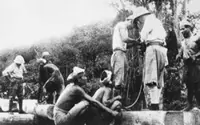A section of the Death Railway bridge over the Kwai Noi River at Kanchanaburi province Thailand. Photo: 123rf.com
The story of the Siam-Burma Death Railway (built in October 1942 to Oct 16, 1943) constitutes an important aspect of what historians call "the Pacific theatre of World War II".
There is an international dimension to this, involving the Japanese, the Allied Forces and the colonised peoples of South-East Asia, including the migrant Indian population.
Already a subscriber? Log in
Save 30% OFF The Star Digital Access
Cancel anytime. Ad-free. Unlimited access with perks.





